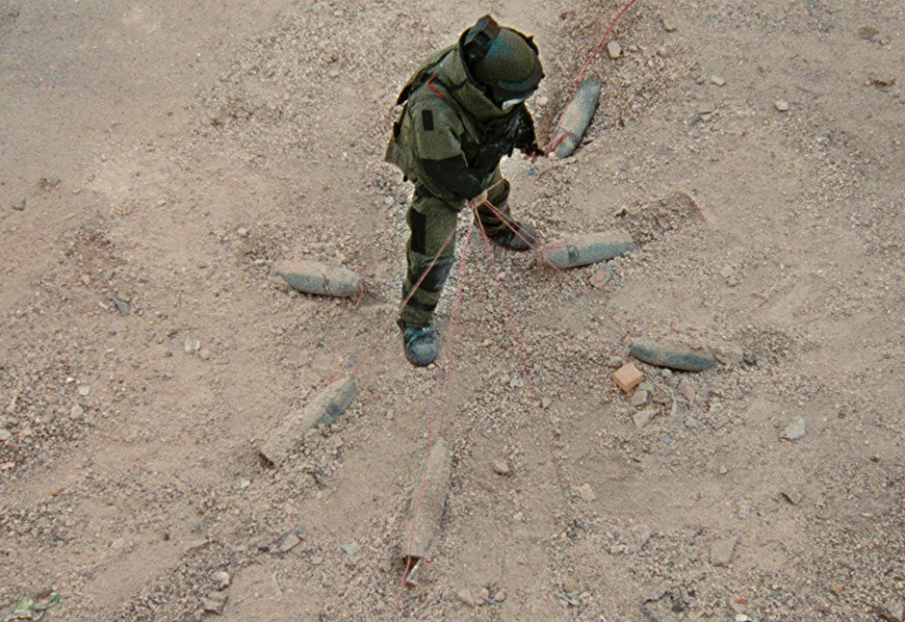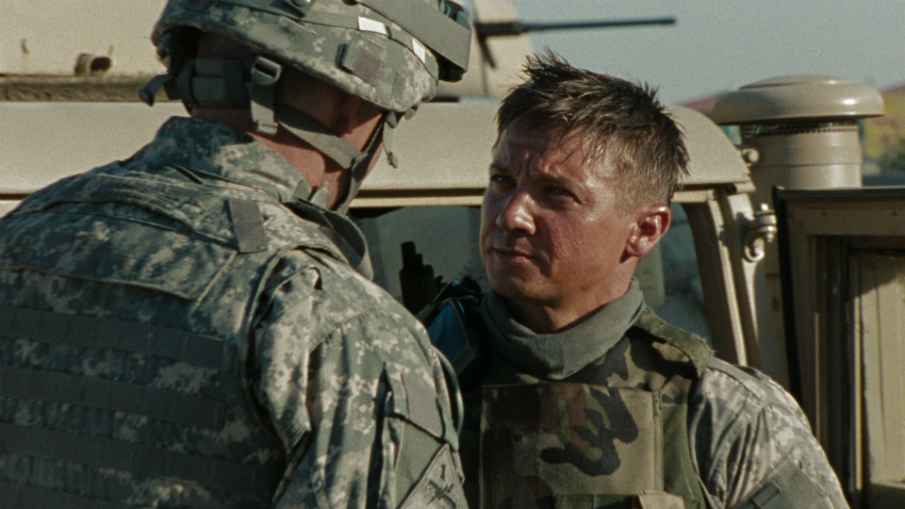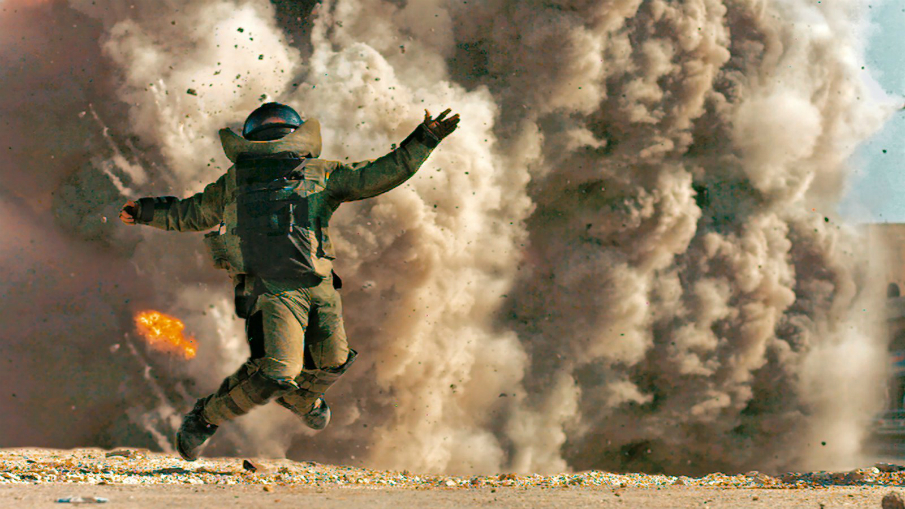The 2009 Oscars signaled a major change within the Academy. After the unprecedented outcry of both The Dark Knight and to a lesser extent WALL-E not being nominated for Best Picture in 2008, Academy members voted to expand the Best Picture lineup from five to 10. This would hopefully allow more films recognizable to the general public to get nominated and thus have a vested interest in the awards.
The Best Picture lineup did see multiple box office powerhouses nominated, including Avatar, The Blind Side, District 9 and Up. But ironically, the film that went on to win Best Picture was one of the lowest grossing in the mix, The Hurt Locker. Avatar was perhaps its biggest competition, by sheer nature of becoming the highest grossing movie of all time and sporting some eye-popping, game-changing visuals. As such, the awards race turned into a real David vs. Goliath situation, a modestly-budgeted war drama going against a titan of visual spectacle.
There is a deep irony in the Academy wanting more public-friendly films in the Best Picture race but going on to reward a film that barely made a dent at the box office. At the end of the day, the Academy is always looking to get the public more involved, but its members will always vote for what they want, regardless of how the general public will react. I am fine with this, as there should be little to no consideration of how much money a film made when judging it for its merits. I also admire that they made an effort to include a diverse group of films in this lineup and the lineup of 2010. But as we’ve seen in recent years, the Academy has mostly reverted back to mostly just nominating indie dramas, with the occasional blockbuster in the mix.
Regardless, let us travel back in time to the 2009 Oscars and explore how The Hurt Locker beat Avatar, Inglourious Basterds and more.
The Campaign
The Hurt Locker debuted at the Venice International Film Festival on Sept. 4, 2008, to an enormous response. This famously included a 10-minute standing ovation after the movie screened, after which it earned multiple Collateral Awards at the festival. While there was some hesitance from distributors to buy the film, given how poorly films about the Iraq War had done in recent years, Summit Entertainment ultimately picked up the tab. The movie continued to screen at film festivals through the end of 2008, with a big release planned for June 2009.
Following its rapturous festival buzz, the film was released on June 26, 2009, eventually making $17 million at the U.S. box office. It remains the lowest grossing Best Picture winner in history, adjusted for inflation, but Summit more than made up for the film’s weak box office on the awards campaign trail. They were helped greatly by the rolling momentum of critics groups from Los Angeles and New York giving it their Best Picture prize, and the idea of director Kathryn Bigelow becoming the first woman to ever win Best Director at the Oscars became a tangible possibility.
The Hurt Locker earned nine Oscar nominations, tying Avatar for the most of any film in 2009, including Best Picture, Best Director, Best Actor for Jeremy Renner, Best Original Screenplay, Best Cinematography, Best Film Editing, Best Original Score, Best Sound Editing, and Best Sound Mixing.
The Other Nominees
In this first year of the expanded Best Picture lineup, we had a diverse set of nominees, from populist fare to indie darlings. Joining The Hurt Locker among this year’s Best Picture nominees were Avatar, The Blind Side, District 9, An Education, Inglourious Basterds, Precious, A Serious Man, Up, and Up in the Air.
There was a handful of contenders that benefited from the new system and likely would not have made it into a field of five. Such films, which earned only one or two other nominations, included The Blind Side, An Education and A Serious Man. The Blind Side was a major box office hit, an inspirational sports drama about a white woman who adopts an impoverished black boy and helps lead him to the NFL. Star Sandra Bullock was the talk of the town in 2009 and won Best Actress on her first nomination. On the other end we had quieter films like An Education and A Serious Man, the former starring Carey Mulligan as a schoolgirl who falls in love with a con man and the latter starring Michael Stuhlbarg as a Jewish man questioning his faith.
Still in that lower tier we had two films the Academy typically does not go for: animated and sci-fi. Up became the first animated film nominated for Best Picture since 1991’s Beauty and the Beast, telling the story of an elderly widow who ties balloons to his house and flies to South America. The film won two Oscars, for Animated Feature and Original Score. Then there was District 9, Neil Blomkamp’s experimental film about an alien race interred on Earth that makes a connection with a bureaucrat.
For all intents and purposes, this year’s Oscar race came down to a clear top five: Avatar, The Hurt Locker, Inglourious Basterds, Precious, and Up in the Air. Quentin Tarantino finally found himself back in the Oscar race this year with Inglourious Basterds, an alternate history film in which the Jews successfully conquer the Nazis. Christoph Waltz swept award season with his scene-stealing performance as Hans Landa, winning just about every Best Supporting Actor prize. Similarly, Mo’Nique won every Best Supporting Actress award for playing the monstrous mother of Gabourey Sidibe’s title character in Precious, a film about a girl growing up in poverty who tries to break the cycle of abuse. The film’s screenwriter, Geoffrey Fletcher, surprisingly won Adapted Screenplay over Up in the Air, which had taken just about every prize in 2009. Speaking of Up in the Air, the film starring George Clooney as a frequent flier who helps businesses fire employees seemed to be an early winner possibility but went home empty-handed on Oscar night.
The race truly came down to The Hurt Locker vs. Avatar. David vs. Goliath. If David and Goliath also happened to be ex-spouses. Avatar was quite literally the Titanic of 2009, James Cameron’s ambitious 3D spectacle set in the 22nd century that drew comparisons to Pocahontas and Dances with Wolves. It became the highest grossing movie both in the U.S. and worldwide, surpassing Cameron’s own record for Titanic. While hailed as an advanced technical marvel, it was also heavily criticized for its less-than-original screenplay.

The Final Vote
The showdown of David vs. Goliath began when The Hurt Locker and Bigelow won at the Critics’ Choice Awards only to have Avatar and Cameron win at the Golden Globes. But that proved to be the end of the road for Avatar, as The Hurt Locker went on to win at BAFTA, the Directors Guild of America (DGA), and the Producers Guild of America (PGA). By the time the Oscars rolled around it was pretty much a foregone conclusion that The Hurt Locker was winning Best Picture, along with a historic victory for Bigelow in Best Director. Despite Avatar‘s record-breaking success and technological achievement, it was clear that The Hurt Locker‘s gripping story and its themes of the damaging psychological effects of war were simply more weighty to the Academy.
The Hurt Locker went home with six Oscars, including Best Picture, Best Director, Best Original Screenplay for Mark Boal, Best Best Film Editing, Best Sound Editing, and Best Sound Mixing. Meanwhile, Avatar won just three, for Art Direction, Cinematography, and Visual Effects.
The Film Itself
The Hurt Locker explores such fascinating territory in examining the particular kind of allure war can have on certain men and women. It gets at our competitive, primal instincts, that unmistakable drive for purpose hidden within us that can be hard to tamp down. It is also one of the most taut thrillers in recent memory, with sharp editing and excellent sound design that fully immerses you on the ground in Iraq, where anyone you meet could die in an instant.
Jeremy Renner is stellar in the lead role as Sergeant First Class William James, portraying the nerve-wracking pressure of handling IEDs with a lived-in sense of duty. Bigelow naturally draws out Renner’s character, to the point where we know exactly what he is going through as he stares vacantly in the cereal aisle of a grocery store, far away from the thrill of war.

Will The Hurt Locker Stand the Test of Time?
The Hurt Locker is rooted in a gritty realism that may not appeal to those who cannot handle heavy violence, but nine years later I believe it is absolutely one of the most impressive war films ever made. It should also be remembered as the definitive movie about the Iraq War, like All Quiet on the Western Front was for World War I and Saving Private Ryan was for World War II. From a historical perspective, it has stood the test of time and will likely continue to do so. A modern classic to be sure.
What do you think? To watch The Hurt Locker for yourself, it is available to rent or buy on Amazon Instant Video, DVD or Blu-ray through the following links:




